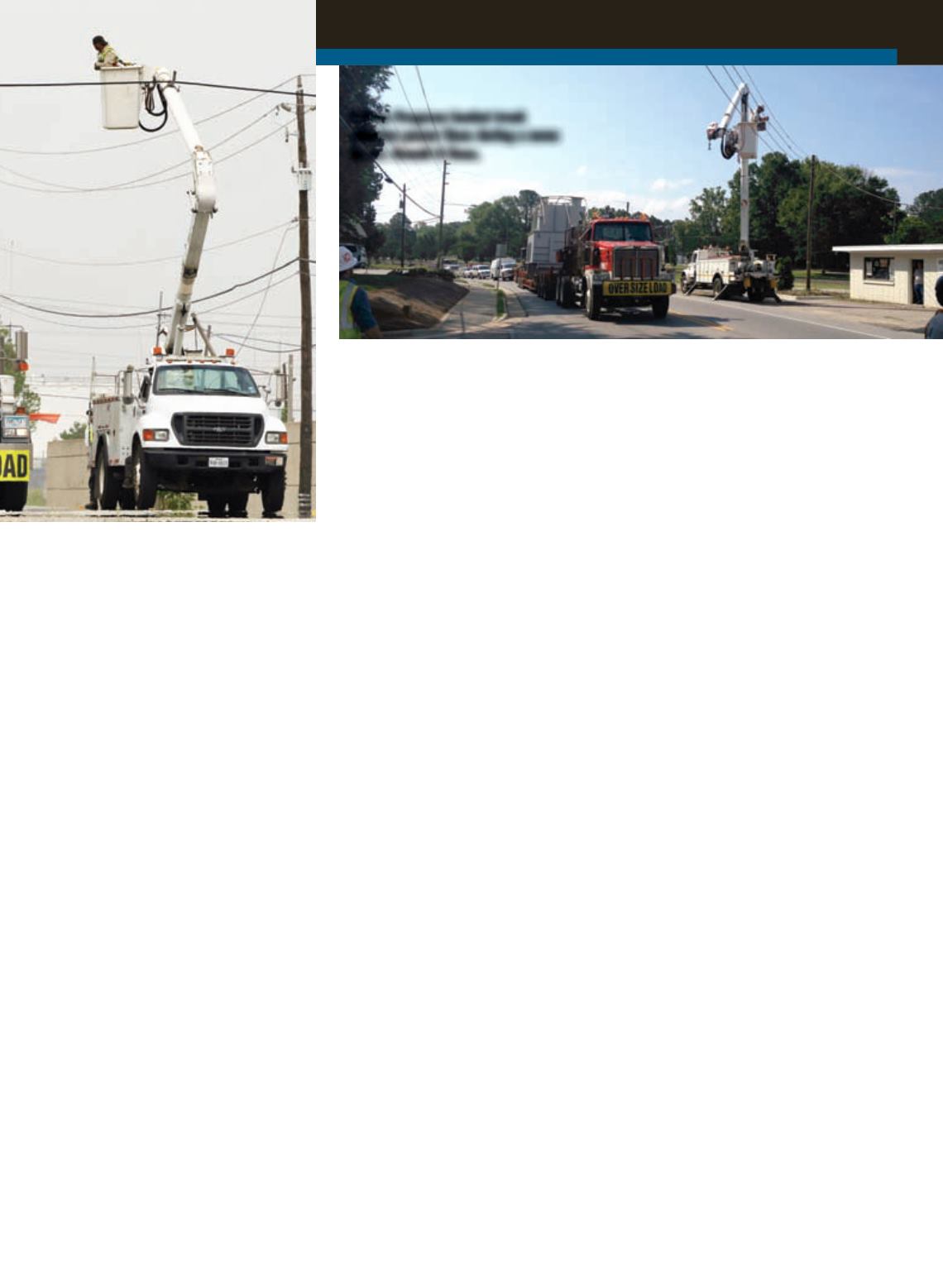
REGULATORYREVIEW
53
APRIL 2014
ACT
Aftermonthsof discussion, theproblem
was solved.DukeEnergy revised its
oversize loadpolicy to revert to its
previouspractices thathad served the
publicand the industrywell (with the
exceptionof loads at excessiveheights).
“SC&RA frequentlypartnerswith state
truckingassociations to resolve issuesof
concern toourmutualmembers,” said
SC&RAExecutiveVicePresident Joel
Dandrea. “RickTodd sets averyhigh
standard for such relationships.He stays
extremelyknowledgeableabout the issues
inhis state, knowshow tobring thekey
players to the table, and follows through to
theveryend.”
Wishing for the old days
RayMorgan, regional vicepresident
ofPerkinsSpecializedTransportation
Contracting,Northfield,MN, said such
problems arewidespread, generally
starting for loads atheightsof about 18 feet
in theTexas toCanadacorridor.He longs
for thedayswhencarriersnotifiedutilities
that theyplanned tomakeamoveand
carefullyelevatewiresor signal lineswith
theirownbucket trucks.
“Upuntil about fiveyears ago, theutility
might send someonealong toobserveand
make surewedid it right.Therecould
beaminimal cost, and sometimes they
wouldn’t chargeus at all,”he recalled.
“Today, they’ll sometimes sendout
twoor three trucks. It’s gettingquite
expensive, andwe think thereare some
utilitycompanies that see this as a regular
revenueopportunity.”
A small utilitycompanymaypanic
uponhearingabout the largedimensions
of a loadand react bybecoming
excessivelycautious.Regardlessof the
utilities’motivation,Morganbelieves
57,500megawattsof electricgenerating
capacity inFlorida, Indiana,Kentucky,
NorthCarolina,OhioandSouthCarolina.
DukeEnergyalsohas assets inCanadaand
LatinAmerica. Inaddition tooperating
power linesunderwhichSC&RA
membersmust travelwithoversize loads,
DukeEnergyalso ranks among thebest of
customers for those samemembers that
haul, lift andpositionmassivepowerplant
components.
SC&RA respondedby sendingSteven
Todd toSouthCarolina,wherehemet
withOswalt andSuperiorTransportation’s
PatrickBarber and laterwithSouth
CarolinaDepartment ofTransportation
officers, includingChiefCounsel Linda
McDonald,UtilitiesEngineerMark
AttawayandOversize/OverweightPermit
ManagerMechelleMabry.
SCTA’sRickToddcontinually facilitated
discussionswitheveryoneStevenTodd
metwith, aswell asStateSenatorThomas
Alexander, chairof theStateRegulation
ofPublicUtilitiesReviewCommittee;
severalDukeEnergyexecutives; andother
stakeholders.
“We took thepolitical routebecause
theutilities are regulated.We felt that the
Senatorwhohasoversight authorityover
theutilitiesneeded tobe involvedbecause
thiswas amatterof publicpolicy,” said
RickTodd. “Weneverused thepolitical
systemunder a threat toDukeEnergy.
Wewanted theutility, the regulators and
the legislators to staycognizant thatDuke
Energy’sprices, policies andprocedures
havea far-reaching impact.”
theadditional equipment andpersonnel
canactuallyhinder rather thanenhance
safety.Hepraisedcrews from thebucket
truckcompaniesunder contractwithhis
company forworking in tandem, often
leapfroggingalong the route tokeepa
jobprogressing safelyand seamlessly.
However, he faults thoseprovidedby
utilities foroften lackinganappreciation
of theconsiderations requiredof themove.
“It canbecomemoreof acircus thana
straightmove,”he said. “A jobcango from
mild towild inahurry.”
Equallydisconcerting iswhenutility
crews requiredunder apermit arrive
late–ornot at all. “Wehave towait until
we find thembecauseotherwisewe’re
subject to fines andpenalties,”he said.
“It’s an interruption forus, anda loss in
productivity.Moreoften thannot, there
arecraneswaitingon theother end, and
theyget thrownoff schedule, too.”
Thepainextendswell beyond the
specializedcarrier,Morganpointedout.
“As an industry,we’renot paying those
charges.Our customers are,”he said.
“Theypass along theexpense to their
customers, soultimately it isU.S. citizens
whoenduppaying.”
Morgancalledon stategovernments to
put intoplacebest-practices guides for
workingwithutilities. “Weareasking
them toensure reasonable, predictable
procedures andprices that protectus aswe
allwork together toprotect our employees
andequipment, thepublicand the
infrastructureoverhead,”he said.
SC&RAencourages thosewhoencounter
problemswithutilities togather the facts
andconduct cordial but firmdiscussions
with theutilityand the stategovernment.
If that fails, pleasecall SC&RAat 703-698-
0291or sendemail to
.
■
Four years after Perkins Specialized hauled 19-foot, 4-inch vessels from Houston to the oil
sands of Canada, the company repeated themove, using duplicate partswith no engineering
changes. Ancillary costs for bucket trucks provided by private companies and utilities cost
about $125,000 for the first move; those costs for the secondmovewere $265,000.
A Duke Progress bucket truck
elevates power lines during amove
by J.E. Oswalt & Sons.


